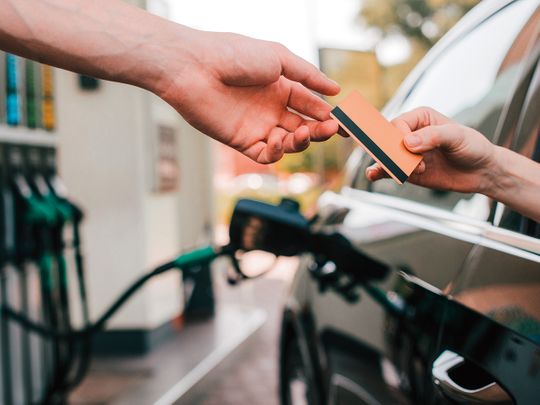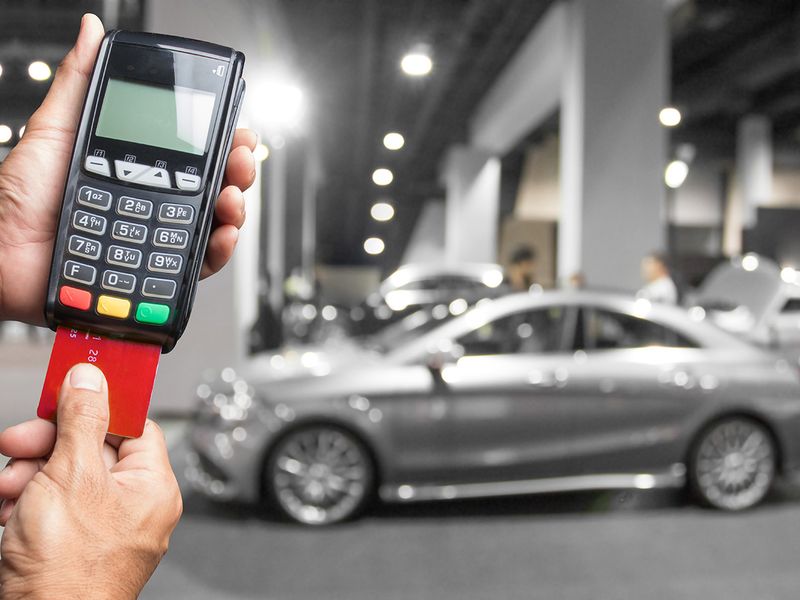
Dubai: Credit cards often offer a convenient option to meet fuel expenses, but the question is whether the cashback offered by such cards is significant enough to minimise what you spend on fuel?
Most credit card issuers provide different categories of cards offering higher rewards on specific transactions based on the target consumer group’s spending habits.
Fuel credit cards are aimed at those incurring huge expenses on fuel. Fuel credit cards offer fuel surcharge waiver, and higher cashbacks and reward points on fuel spends.
So, while some cash back credit cards offer as much as 3 per cent back on fuel, other cards offer reward points that you can redeem for fuel purchases.
However, you should only use a credit card if you are paying the full balance each month. If you leave a balance on your card, no amount of cash back will make up for the interest you're paying on the debt.
So, here you can see the comparison between the reward points and cashback if you are a frequent user of a credit card.

Rewards for filling fuel?
Several traditional rewards credit cards now offer fuel rewards, but work in a different way. Instead of receiving a nominal amount off your fill-up, you get a percentage of the amount you spend.
If the price of fuel increases, the amount you receive back follows that increase since it's a percentage amount.
Many general cash back cards will offer anywhere from 2 per cent to 5 per cent cash back on your fuel purchases, and at times even up to 10 per cent which is appealing. But you must read the fine print.
Typically, that cash back percentage is capped at an annual spend. Once you exceed that amount of petrol or diesel purchases, you generally will only receive 1 per cent back on your fuel transactions.
Depending on your credit score, these cards often have a slightly lower rate than fuel-only reward cards. And you will receive rewards on everything you buy which can add up to a significant amount of money.
4 factors to weigh before applying for a credit card to earn fuel cashbacks
1. Benefits should exceed card fees
Choose the credit card whose welcome benefits, renewal benefits, discounts, cashbacks, reward points, vouchers and other card benefits exceed its joining or annual fees by a wide margin.
At times, these credit card variants also offer predefined spending targets that could be met to waive membership charges.
Experts suggest you should also check whether you can meet those targets to save on annual fees and ensure your card benefits come free of cost, provided you clear your dues in full on time.

2. Compare applicable finance charges
Failure to repay credit card bills in full by the due date can incur finance charges, broadly ranging between 23 per cent and 49 per cent per year, depending on the card and its issuer.
While it is practical to pay your credit card bills in full by the due date, it is still crucial to check and compare the applicable finance charges on fuel credit cards.
3. Fuel rewards may have expiry dates
The reward points of most fuel credit cards expire in two-three years from their date of credit. However, some credit card issuers offer cards without expiry on reward points.
Therefore, experts always reiterate that you read the terms and conditions regarding the redemption, accumulation, and expiry of reward points before zeroing in on a fuel card.
4. Welcome benefits vary with issuers
Another parameter to factor in is to compare the joining bonus and welcome benefits offered by various fuel card issuers.
Consider the actual value proposition of using such a credit card according to your requirements and budget while considering the applicable riders.

Key takeaways
If you are in the market for a credit card with rewards, look at your end-of-year credit statement to see which category you spend most on overall — it may not be fuel, view credit consultants.
The experts add that you may end up earning more points with a card that gives you flat-rate rewards, like 2 per cent on everything you buy. It depends purely on your spending habits.
Experts also recommend using 3 per cent cashback as a benchmark as most lucrative cards offer the equivalent of 3 per cent or more in rewards.
Furthermore, look for credit cards that offer bonus rewards on not only fuel but other areas of spending, too. Why? You might not spend as much on petrol or diesel as much as you think.
As more cards add gas spending as a bonus rewards category, you might find you already have a decent card for pump purchases.
Some fuel cashback credit cards also place limits on how much fuel spending will earn accelerated points or cash back.
But regardless, one can collectively agree that if you're going to pay for fuel, you might as well use a credit card that gives you cash back for those purchases.









